In the quest for eternal youth and flawless skin, the aesthetics industry continually evolves, introducing innovative techniques and treatments.
Amidst a myriad of treatments and techniques, two distinct categories have emerged as game-changers: biostimulators and biologics.

While these terms may sound similar, they represent distinct approaches to achieving the same goal – revitalizing the skin and restoring its natural radiance. The primary difference between a biostimulator and a biologic used in facial rejuvenation lies in their mechanisms of action and the substances they utilize to achieve skin rejuvenation.
Let’s unravel the differences between biostimulators and biologics, exploring their unique mechanisms, benefits, and applications for facial rejuvenation.
Biostimulators : Unveiling the Power of Collagen Induction
Biostimulators are agents designed to stimulate the body’s natural processes, particularly collagen production. Collagen, the building block of youthful skin, provides structure, elasticity, and resilience. However, as we age, collagen production diminishes, leading to wrinkles, sagging, and loss of volume. Biostimulators intervene by jumpstarting collagen synthesis, effectively rejuvenating the skin from within.
Mechanism: Biostimulators typically contain synthetic or biocompatible materials, such as poly-L-lactic acid (PLLA) or calcium hydroxylapatite (CaHA). When injected into the skin, these substances trigger a cascade of cellular responses, prompting fibroblasts to produce new collagen fibers. Over time, this process leads to improved skin texture, firmness, and overall youthfulness.
Benefits: Biostimulators offer gradual yet long-lasting results, with improvements becoming more apparent over several weeks to months. Unlike traditional fillers, which provide immediate volume enhancement, biostimulators deliver a natural-looking outcome that evolves with time. Additionally, biostimulators can address a wide range of concerns, including wrinkles, folds, and facial contours, making them a versatile option for facial rejuvenation.
Biostimulators Used for Facial Rejuvenation
Calcium Hydroxylapatite (CaHA): Calcium hydroxylapatite, or CaHA, is a biostimulator commonly used for facial rejuvenation. CaHA is a mineral-like compound found naturally in bones, making it biocompatible and well-tolerated by the body.
When injected into the skin, CaHA microspheres stimulate collagen production while providing immediate volume and lift. CaHA biostimulators are ideal for restoring facial contours, smoothing moderate to severe wrinkles, and enhancing overall facial harmony.
The results are both immediate and long-lasting, with effects lasting up to 12 months or more.
Poly-L-Lactic Acid (PLLA): Poly-L-lactic acid, commonly known as PLLA, is a biocompatible and biodegradable synthetic polymer.
When injected into the skin, PLLA stimulates the production of collagen, gradually improving skin texture, volume, and elasticity. PLLA-based biostimulators are particularly effective for treating deep wrinkles, facial folds, and areas of volume loss.
Unlike traditional fillers, which provide immediate results, PLLA biostimulators work gradually, with optimal outcomes typically visible after several months. The results are long-lasting, lasting up to two years or more in some cases.

Polycaprolactone (PCL): Polycaprolactone, or PCL, is a biodegradable polyester that has gained popularity as a biostimulator for facial rejuvenation.
PCL biostimulators stimulate collagen synthesis and provide structural support to the skin, resulting in improved firmness, elasticity, and texture. PCL injections are suitable for treating nasolabial folds, marionette lines, and other signs of aging.
The results are gradual, with optimal improvement visible over several months. PCL biostimulators offer long-lasting effects, lasting up to 18 months or more.
Polylactic-Co-Glycolic Acid (PLGA): Polylactic-co-glycolic acid, or PLGA, is a biodegradable copolymer that acts as a biostimulator for facial rejuvenation.
PLGA microparticles are injected into the skin to stimulate collagen production and improve skin texture and elasticity. PLGA biostimulators are effective for treating fine lines, wrinkles, and areas of volume loss.
The results of PLGA treatments are gradual and can last for several months.
Biostimulator treatments offer a versatile and effective approach to facial rejuvenation, addressing a wide range of concerns, from wrinkles and fine lines to volume loss and skin laxity. By stimulating collagen production and promoting tissue regeneration, biostimulators help restore youthfulness and vitality to the skin, yielding natural-looking and long-lasting results.
Whether you decide to administer PLLA, CaHA, PCL, PLGA or a combination of these biostimulators to your patients, these treatments can help them achieve radiant, refreshed, and rejuvenated skin, allowing them to look and feel their best at any age.
Biologics : Tapping into the Body’s Regenerative Potential
Biologics represent a different approach to facial rejuvenation, focusing on harnessing the regenerative power of the body’s own tissues and proteins. Derived from natural sources such as blood, fat, or placental tissue, biologics contain bioactive substances that promote tissue repair, collagen synthesis, and overall skin renewal.
Mechanism: Biologics, such as Platelet-Rich Plasma (PRP) or stem cell-based therapies, work in facial rejuvenation by stimulating the body’s natural healing processes. PRP contains growth factors and cytokines that promote collagen production, tissue repair, and angiogenesis, leading to improved skin texture, elasticity, and overall rejuvenation. Stem cell-based therapies utilize the regenerative potential of stem cells to repair damaged tissues, increase collagen synthesis, and enhance skin quality.
Benefits: Biologics offer a natural and minimally invasive approach to facial rejuvenation, with little to no risk of allergic reactions or adverse side effects. These treatments can effectively address a range of concerns, including fine lines, wrinkles, scars, and uneven skin tone. Additionally, biologics promote tissue regeneration and healing, resulting in a fresher, more youthful complexion over time.
Biologics Used for Facial Rejuvenation
Exosomes: Exosomes are tiny membrane-bound vesicles secreted by cells that contain a variety of bioactive molecules, including growth factors, cytokines, and nucleic acids.
For facial rejuvenation, exosomes derived from stem cells or other cellular sources are used to promote tissue regeneration, stimulate collagen production, and improve overall skin health.
Exosome therapy offers a natural and minimally invasive approach to facial rejuvenation, with little to no risk of adverse reactions.
Growth Factors: Growth factors are naturally occurring proteins that play a crucial role in regulating cell growth, proliferation, and differentiation.
For facial rejuvenation, growth factors derived from sources such as human fibroblasts or placental tissue are used to promote tissue repair and stimulate collagen synthesis. By applying growth factors topically or incorporating them into cosmetic products, patients can achieve smoother, firmer, and more youthful-looking skin.
Growth factor-based treatments are often used in conjunction with other facial rejuvenation procedures to enhance results and accelerate healing.
Hyaluronic Acid: While not strictly a biologic, hyaluronic acid is a naturally occurring substance found in the skin that plays a crucial role in maintaining hydration and volume.
For facial rejuvenation, hyaluronic acid fillers are commonly used to restore volume, fill in wrinkles and fine lines, and enhance facial contours.
Hyaluronic acid fillers provide immediate results and are well-tolerated by most patients.

Platelet-Rich Plasma (PRP): Platelet-rich plasma (PRP) is one of the most well-known and widely used biologics for facial rejuvenation. PRP is derived from the patient’s own blood, which is processed to concentrate platelets and growth factors.
When injected into the skin, PRP stimulates collagen production, accelerates tissue repair, and improves overall skin texture and tone. PRP treatments are particularly effective for reducing fine lines and wrinkles, enhancing skin elasticity and restoring a youthful glow.
The procedure is minimally invasive and involves little to no downtime, making it a popular choice for patients seeking natural-looking results with minimal risk.
Stem Cell Therapy: Stem cell therapy is another promising biologic approach to facial rejuvenation. Stem cells are undifferentiated cells with the remarkable ability to differentiate into various cell types and promote tissue regeneration.
For facial rejuvenation, stem cell therapy involves harvesting stem cells from the patient’s own adipose tissue (fat) or bone marrow, or harvesting them from placental tissues and introducing them into the skin through injections or topical application. Stem cell therapy promotes collagen production, improves skin elasticity, and enhances overall skin quality.
While stem cell therapy is still a relatively novel treatment, ongoing research suggests promising outcomes in the field of aesthetic medicine.
Biologics represent a paradigm shift in the field of facial rejuvenation, offering a natural and holistic approach to skin renewal and anti-aging. Whether through platelet-rich plasma, stem cell therapy, or growth factor-based treatments, biologics harness the body’s own regenerative mechanisms to restore youthfulness and vitality to the skin.
As the demand for safe and effective cosmetic procedures continues to rise, biologics stand at the forefront of innovation, providing patients with cutting-edge solutions for achieving radiant, rejuvenated skin.
Treatment with Biostimulators and Biologics
Biostimulators work by stimulating the body’s natural processes, particularly collagen production.
Biologics work by harnessing the regenerative potential of natural substances derived from human cells, tissues, or proteins to promote tissue repair, collagen synthesis, and overall skin renewal.
Choosing the Right Approach
Choosing between a biostimulator and a biologic for facial rejuvenation depends on various factors, including the patient’s individual goals, skin condition, preferences, and medical history.
While both biostimulators and biologics offer significant benefits, they cater to different needs and preferences. Here are some considerations to help you make an informed decision:
Biostimulators
Desired Results: Biostimulators are effective for addressing concerns such as wrinkles, facial folds, and volume loss by stimulating collagen production and improving skin texture and firmness gradually over time.
Longevity: Biostimulators offer long-lasting results, with effects typically lasting for months to years depending on the specific product used and individual patient response.
Treatment Area: Biostimulators are suitable for larger treatment areas or areas requiring significant volume restoration, such as the cheeks, temples and jawline.
Patient Preference for Synthetic Materials: If the patient prefers treatments that involve synthetic or biocompatible materials rather than natural substances derived from the body, biostimulators may be a preferred option.
Biologics
Enhanced Healing: Biologics can accelerate wound healing and tissue repair, making them ideal for patients with sensitive skin or those undergoing more invasive procedures.
Natural Approach: Biologics offer a natural and holistic approach to facial rejuvenation by harnessing the body’s own regenerative potential.
Immediate Results: Some biologics, such as PRP or growth factor-based treatments, may provide immediate improvements in skin texture, tone, and hydration, making them suitable for patients seeking quick results.
Treatment Area and Concerns: Biologics are versatile and can address a wide range of concerns, including fine lines, wrinkles, scars, uneven skin tone and texture. They are suitable for various treatment areas, including the face, neck, décolletage and hands.
Patient Preference for Natural Materials: If the patient prefers treatments that involve natural substances derived from the body and have minimal risk of adverse reactions, biologics may be the preferred option.
Administration
Biologics and biostimulators are administered for facial rejuvenation through various techniques, including injections (both single needle and multi-needle automated injectors), topical applications and minimally invasive procedures.

The specific method of administration depends on the type of biologic or biostimulator being used, as well as the patient’s treatment goals and preferences.
Here’s an overview of common administration methods.
Injections
Subcutaneous Injections: Biostimulators such as poly-L-lactic acid (PLLA), calcium hydroxylapatite (CaHA), and polycaprolactone (PCL) are typically administered through subcutaneous injections directly into the targeted areas of the face. The injections are usually performed using a fine needle or a multi-needle automated injector to minimize discomfort and ensure precise placement.
Intradermal Injections: Biologics such as platelet-rich plasma (PRP) and growth factor-based treatments are commonly administered through intradermal injections. PRP injections involve drawing blood from the patient, processing it to isolate the platelet-rich plasma and then injecting it into the skin using a syringe with a fine needle or a multi-needle automated injector. Similarly, growth factor-based treatments may involve injecting growth factor solutions directly into the skin to stimulate collagen production and promote tissue regeneration.
Minimally Invasive Procedures
Microneedling with PRP: Microneedling, a minimally invasive procedure that involves creating micro-injuries in the skin using tiny needles, can be combined with PRP to enhance collagen induction and tissue repair. PRP is applied to the skin before or after microneedling to facilitate penetration and maximize the rejuvenating effects.
Combination Injections: Biologics and biostimulators can be combined in the same treatment session to synergistically enhance results. For example, PRP injections may be combined with hyaluronic acid fillers or biostimulators to provide both immediate volume enhancement and long-term collagen stimulation.
Administration with a Multi-Needle Automated Injector
Using a multi-needle automated injector to administer biostimulators or biologics for facial rejuvenation offers several benefits that contribute to improved treatment outcomes and patient satisfaction.
Here are some of the advantages:
Precise and Consistent Delivery
Uniform Distribution: Multi-needle automated injectors ensure that biologics are delivered evenly across the treatment area, minimizing the risk of uneven distribution and optimizing the effectiveness of the treatment.
Consistent Depth: The automated injector controls the depth of penetration, ensuring that biologics are delivered to the desired depth within the skin for maximum efficacy. This consistency helps avoid variations in treatment results and reduces the risk of complications.
Minimized Discomfort and Downtime
Reduced Pain: Multi-needle automated injectors typically use fine needles and advanced technology to minimize discomfort during the injection process. Patients experience less pain compared to manual injections, enhancing their comfort and overall treatment experience.
Quicker Procedure: The automated nature of multi-needle injectors allows for faster treatment times compared to manual injections. This not only improves patient convenience but also reduces the risk of discomfort and fatigue during longer procedures.
Enhanced Safety and Precision
Reduced Risk of Injury: Multi-needle automated injectors are equipped with safety features that minimize the risk of accidental needle sticks and injuries to both patients and healthcare providers. This enhances overall treatment safety and reduces the likelihood of adverse events.
Precise Targeting: The ability to adjust parameters such as needle depth and injection speed allows for precise targeting of specific areas of concern, such as wrinkles, fine lines, or scars. This precision ensures that biologics are delivered exactly where they are needed for optimal results.
Improved Treatment Outcomes
Enhanced Efficacy: The controlled delivery of biologics by multi-needle automated injectors ensures that the active ingredients reach the target tissues at the appropriate depth and concentration, maximizing their therapeutic effects.
Customizable Treatments: Multi-needle automated injectors offer flexibility in treatment parameters, allowing aesthetic providers to customize treatments according to each patient’s unique needs and goals. This tailored approach maximizes the likelihood of achieving desired outcomes and patient satisfaction.
Providing Biostimulators and Biologics to Your Patients
When it comes to facial rejuvenation, selecting the right treatment approach depends on various factors, including patient goals, skin condition, and medical history. Whether opting for biostimulators or biologics, personalizing the treatment to the patient is key to achieving optimal results.
While biostimulators offer gradual improvement and long-lasting results, biologics may require multiple sessions to maintain the desired effect. Understanding the expected timeline and longevity of each treatment option can help aesthetic providers to make an informed decision based on their patient’s lifestyle and preferences.

In the ever-evolving landscape of facial rejuvenation, biostimulators and biologics represent two distinct yet complementary approaches to achieving youthful, radiant skin. Whether stimulating collagen production or tapping into the body’s regenerative potential, these innovative treatments offer safe, effective solutions for restoring confidence and revitalizing the complexion.

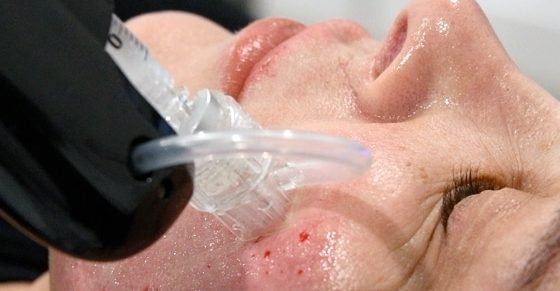
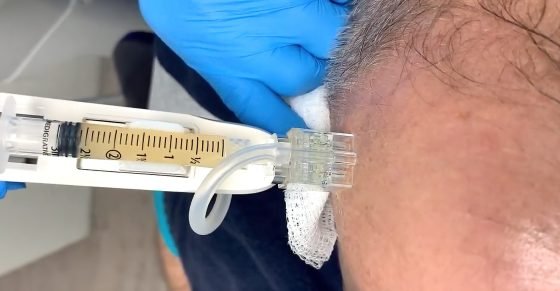
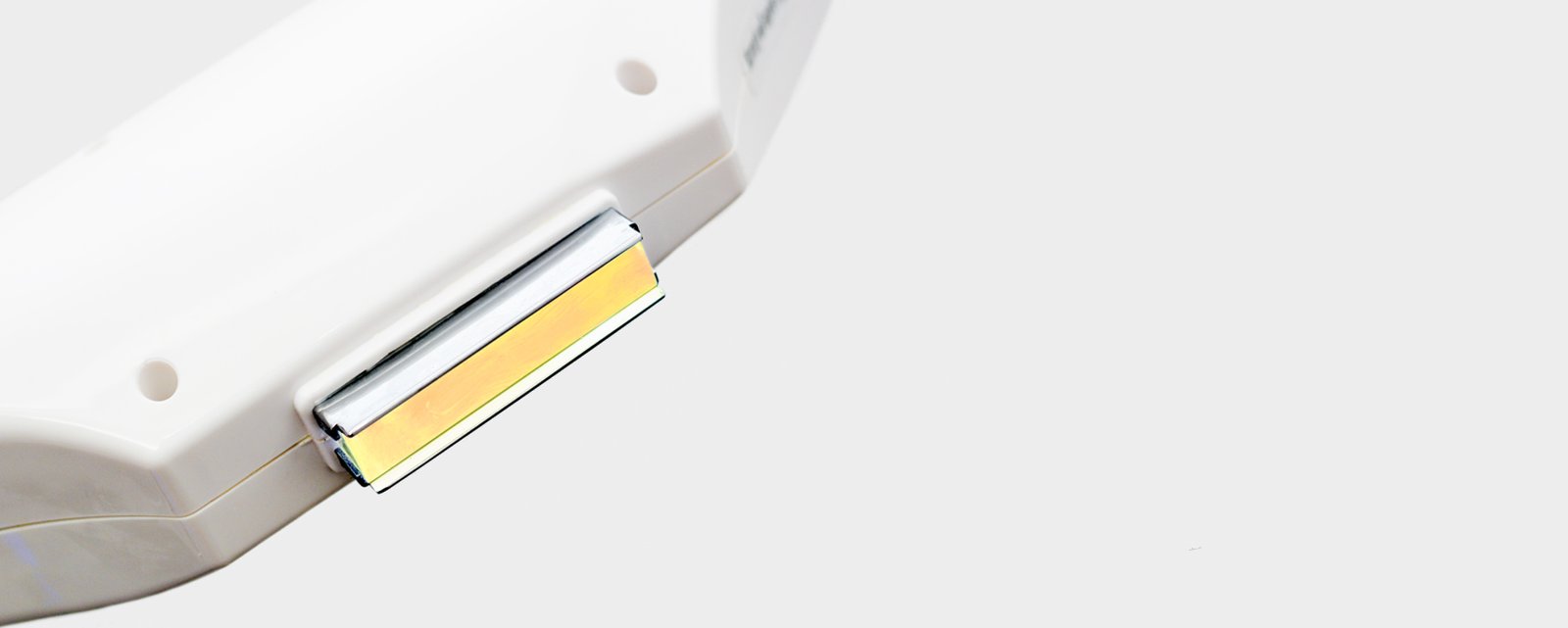

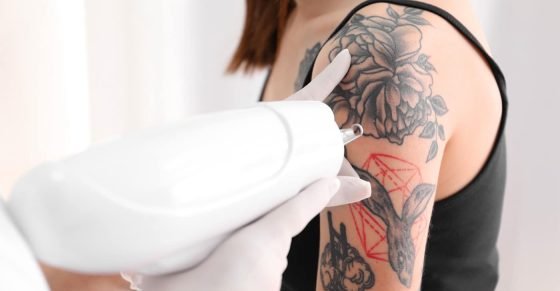
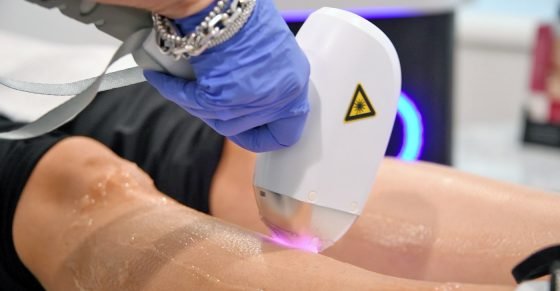
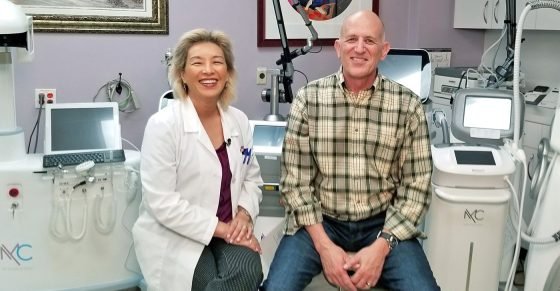
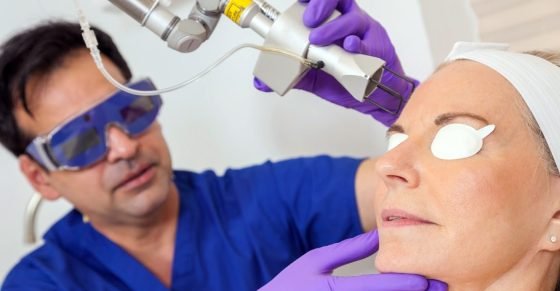

Here, you can discover a great variety of slot machines from famous studios.
Users can try out classic slots as well as new-generation slots with high-quality visuals and interactive gameplay.
Whether you’re a beginner or a casino enthusiast, there’s something for everyone.
casino games
The games are available anytime and compatible with PCs and tablets alike.
No download is required, so you can jump into the action right away.
Platform layout is intuitive, making it convenient to explore new games.
Join the fun, and discover the excitement of spinning reels!
这个网站 提供 多样的 成人内容,满足 不同用户 的 喜好。
无论您喜欢 哪一类 的 内容,这里都 应有尽有。
所有 内容 都经过 精心筛选,确保 高品质 的 观看体验。
喷出
我们支持 各种终端 访问,包括 平板,随时随地 尽情观看。
加入我们,探索 无限精彩 的 成人世界。
Прямо здесь вы найдете Telegram-бот “Глаз Бога”, который найти данные о гражданине через открытые базы.
Бот активно ищет по ФИО, обрабатывая актуальные базы онлайн. Через бота доступны бесплатный поиск и детальный анализ по фото.
Платформа обновлен согласно последним данным и включает аудио-материалы. Глаз Бога сможет найти профили по госреестрам и покажет результаты в режиме реального времени.
Глаз Бога бот
Данный бот — выбор для проверки персон удаленно.
На данном сайте вы можете получить доступ к боту “Глаз Бога” , который может собрать всю информацию о любом человеке из общедоступных баз .
Данный сервис осуществляет проверку ФИО и предоставляет детали из соцсетей .
С его помощью можно пробить данные через Telegram-бот , используя имя и фамилию в качестве начальных данных .
пробив машины по номеру
Алгоритм “Глаз Бога” автоматически обрабатывает информацию из проверенных ресурсов, формируя подробный отчет .
Подписчики бота получают пробный доступ для ознакомления с функционалом .
Платформа постоянно обновляется , сохраняя скорость обработки в соответствии с законодательством РФ.
Searching for exclusive 1xBet promo codes? This site offers working promotional offers like 1XRUN200 for registrations in 2024. Claim up to 32,500 RUB as a welcome bonus.
Use trusted promo codes during registration to maximize your bonuses. Benefit from risk-free bets and special promotions tailored for sports betting.
Find daily updated codes for global users with fast withdrawals.
Every promotional code is checked for validity.
Don’t miss exclusive bonuses like 1x_12121 to increase winnings.
Active for new accounts only.
https://active-bookmarks.com/story19559783/unlocking-1xbet-promo-codes-for-enhanced-betting-in-multiple-countriesKeep updated with 1xBet’s best promotions – enter codes like 1XRUN200 at checkout.
Experience smooth benefits with easy redemption.
Здесь вы можете найти боту “Глаз Бога” , который позволяет собрать всю информацию о любом человеке из открытых источников .
Этот мощный инструмент осуществляет анализ фото и раскрывает данные из государственных реестров .
С его помощью можно пробить данные через специализированную платформу, используя автомобильный номер в качестве начальных данных .
проверка автомобиля по вин
Система “Глаз Бога” автоматически обрабатывает информацию из открытых баз , формируя исчерпывающий результат.
Клиенты бота получают ограниченное тестирование для ознакомления с функционалом .
Решение постоянно развивается, сохраняя скорость обработки в соответствии с законодательством РФ.
Здесь вы можете найти боту “Глаз Бога” , который позволяет проанализировать всю информацию о любом человеке из открытых источников .
Данный сервис осуществляет анализ фото и показывает информацию из государственных реестров .
С его помощью можно проверить личность через официальный сервис , используя фотографию в качестве ключевого параметра.
поиск по фото
Технология “Глаз Бога” автоматически обрабатывает информацию из множества источников , формируя исчерпывающий результат.
Подписчики бота получают 5 бесплатных проверок для проверки эффективности.
Сервис постоянно развивается, сохраняя актуальность данных в соответствии с законодательством РФ.
В этом ресурсе доступен специализированный бот “Глаз Бога” , который анализирует сведения о любом человеке из публичных баз .
Инструмент позволяет пробить данные по номеру телефона , формируя отчет из государственных баз .
https://glazboga.net/
Here offers up-to-date information about Audemars Piguet Royal Oak watches, including retail costs and model details .
Discover data on popular references like the 41mm Selfwinding in stainless steel or white gold, with prices starting at $28,600 .
The platform tracks collector demand, where limited editions can sell for $140,000+ .
Piguet Royal Oak 15500 or price
Movement types such as automatic calibers are thoroughly documented .
Stay updated on 2025 price fluctuations, including the Royal Oak 15510ST’s market stability .
Сертификация и лицензии — обязательное условие ведения бизнеса в России, обеспечивающий защиту от непрофессионалов.
Обязательная сертификация требуется для подтверждения соответствия стандартам.
Для торговли, логистики, финансов необходимо специальных разрешений.
https://ok.ru/group/70000034956977/topic/158835944110257
Игнорирование требований ведут к приостановке деятельности.
Добровольная сертификация помогает повысить доверие бизнеса.
Своевременное оформление — залог успешного развития компании.
Ищете подробную информацию коллекционеров? Эта платформа предлагает исчерпывающие материалы для изучения нумизматики!
Здесь доступны коллекционные экземпляры из разных эпох , а также антикварные находки.
Просмотрите архив с характеристиками и высококачественными фото , чтобы найти раритет.
серебряные монеты купить
Для новичков или профессиональный коллекционер , наши статьи и руководства помогут углубить экспертизу.
Не упустите шансом приобрести эксклюзивные монеты с гарантией подлинности .
Станьте частью сообщества энтузиастов и следите аукционов в мире нумизматики.
Discover detailed information about the Audemars Piguet Royal Oak Offshore 15710ST via this platform , including market values ranging from $34,566 to $36,200 for stainless steel models.
The 42mm timepiece features a robust design with mechanical precision and water resistance , crafted in rose gold .
Verified AP Royal Oak Offshore Diver 15710st price
Analyze secondary market data , where limited editions command premiums , alongside pre-owned listings from the 1970s.
Request real-time updates on availability, specifications, and resale performance , with free market analyses for informed decisions.
Discover the iconic Patek Philippe Nautilus, a horological masterpiece that merges sporty elegance with refined artistry.
Launched in 1976 , this legendary watch revolutionized high-end sports watches, featuring distinctive octagonal bezels and horizontally grooved dials .
From stainless steel models like the 5990/1A-011 with a 45-hour power reserve to opulent gold interpretations such as the 5811/1G-001 with a blue gradient dial , the Nautilus suits both discerning collectors and everyday wearers .
Unworn Patek Nautilus wristwatch
The diamond-set 5719 elevate the design with gemstone accents, adding unmatched glamour to the timeless profile.
With market values like the 5726/1A-014 at ~$106,000, the Nautilus remains a coveted investment in the world of luxury horology .
Whether you seek a vintage piece or modern redesign, the Nautilus epitomizes Patek Philippe’s legacy of excellence .
Этот сайт размещает свежие информационные статьи разных сфер.
Здесь представлены новости о политике, науке и разнообразных темах.
Контент пополняется регулярно, что позволяет не пропустить важное.
Простой интерфейс делает использование комфортным.
https://vladtoday.ru
Каждая статья проходят проверку.
Мы стремимся к достоверности.
Присоединяйтесь к читателям, чтобы быть всегда информированными.
Размещение оборудования для наблюдения позволит контроль вашего объекта на постоянной основе.
Современные технологии гарантируют надежный обзор даже в ночных условиях.
Вы можете заказать различные варианты систем, подходящих для бизнеса и частных объектов.
установка видеонаблюдения устанавливают видеонаблюдения
Профессиональная установка и сервисное обслуживание обеспечивают эффективным и комфортным для любых задач.
Свяжитесь с нами, чтобы получить оптимальное предложение по внедрению систем.
Your point of view caught my eye and was very interesting. Thanks. I have a question for you. https://www.binance.com/sl/register?ref=OMM3XK51
Прямо здесь вы найдете Telegram-бот “Глаз Бога”, что найти данные о гражданине из открытых источников.
Инструмент активно ищет по ФИО, анализируя публичные материалы в Рунете. Через бота доступны бесплатный поиск и полный отчет по фото.
Платфор ма обновлен на август 2024 и охватывает мультимедийные данные. Сервис сможет проверить личность в соцсетях и предоставит информацию мгновенно.
бот глаз бога телеграмм
Данный инструмент — идеальное решение для проверки людей удаленно.
Searching for free online games ? This site offers a exclusive collection of casual puzzles and strategy challenges.
Dive into cooperative missions with friends, supported by voice communication for seamless teamwork.
Enjoy user-friendly interfaces designed for effortless navigation , alongside parental controls for secure play.
online casino nz
From sports simulations to creative builders, every game balances fun and cognitive engagement .
Unlock premium upgrades that let you earn in-game perks, with subscription models for deeper access.
Join of a global network where teamwork flourishes , and express yourself through dynamic gameplay .
Can you be more specific about the content of your article? After reading it, I still have some doubts. Hope you can help me.
Thanks for sharing. I read many of your blog posts, cool, your blog is very good.
Хотите собрать информацию о пользователе? Наш сервис предоставит детальный отчет в режиме реального времени .
Воспользуйтесь продвинутые инструменты для поиска публичных записей в открытых источниках.
Выясните место работы или интересы через систему мониторинга с гарантией точности .
настоящий глаз бога
Система функционирует с соблюдением GDPR, используя только общедоступную информацию.
Закажите детализированную выжимку с историей аккаунтов и графиками активности .
Доверьтесь проверенному решению для digital-расследований — точность гарантирована!
Нужно собрать данные о пользователе? Этот бот предоставит детальный отчет мгновенно.
Используйте уникальные алгоритмы для поиска публичных записей в соцсетях .
Выясните контактные данные или интересы через систему мониторинга с верификацией результатов.
глаз бога актуальный бот
Бот работает с соблюдением GDPR, обрабатывая открытые данные .
Закажите расширенный отчет с геолокационными метками и графиками активности .
Доверьтесь проверенному решению для digital-расследований — точность гарантирована!
Наш сервис способен найти данные по заданному профилю.
Достаточно ввести имя, фамилию , чтобы получить сведения .
Система анализирует открытые источники и активность в сети .
актуальный глаз бога
Информация обновляется в реальном времени с проверкой достоверности .
Оптимален для проверки партнёров перед важными решениями.
Конфиденциальность и точность данных — гарантированы.
Хотите собрать данные о пользователе? Наш сервис поможет детальный отчет в режиме реального времени .
Воспользуйтесь уникальные алгоритмы для поиска публичных записей в открытых источниках.
Узнайте место работы или активность через систему мониторинга с верификацией результатов.
бот глаз бога информация
Бот работает в рамках закона , обрабатывая общедоступную информацию.
Закажите детализированную выжимку с геолокационными метками и графиками активности .
Доверьтесь надежному помощнику для исследований — результаты вас удивят !
Здесь можно найти сведения по любому лицу, от кратких контактов до исчерпывающие сведения.
Реестры включают персон всех возрастов, мест проживания.
Данные агрегируются на основе публичных данных, что гарантирует достоверность.
Обнаружение производится по контактным данным, что обеспечивает работу быстрым.
глаз бога бот ссылка
Помимо этого предоставляются контакты а также полезная информация.
Обработка данных обрабатываются с соблюдением правовых норм, обеспечивая защиту утечек.
Воспользуйтесь предложенной системе, в целях получения необходимую информацию максимально быстро.
I don’t think the title of your article matches the content lol. Just kidding, mainly because I had some doubts after reading the article.
Хотите найти информацию о человеке ? Этот бот поможет полный профиль в режиме реального времени .
Используйте уникальные алгоритмы для анализа публичных записей в соцсетях .
Узнайте контактные данные или активность через автоматизированный скан с верификацией результатов.
настоящий глаз бога
Система функционирует с соблюдением GDPR, обрабатывая общедоступную информацию.
Закажите детализированную выжимку с историей аккаунтов и списком связей.
Доверьтесь проверенному решению для исследований — точность гарантирована!
Online platforms provide a innovative approach to connect people globally, combining intuitive tools like profile galleries and compatibility criteria.
Key elements include video chat options, social media integration, and personalized profiles to enhance interactions .
Smart matching systems analyze preferences to suggest potential partners , while account verification ensure trustworthiness.
https://sdzgw.org/dating/gay-porn-in-mainstream-adult-platforms/
Leading apps offer freemium models with enhanced visibility, such as unlimited swipes , alongside profile performance analytics.
Looking for casual chats , these sites cater to diverse needs , leveraging AI-driven recommendations to foster meaningful bonds.
Хотите собрать информацию о человеке ? Наш сервис предоставит детальный отчет мгновенно.
Воспользуйтесь уникальные алгоритмы для поиска цифровых следов в соцсетях .
Узнайте контактные данные или интересы через систему мониторинга с гарантией точности .
бот глаз бога информация
Система функционирует с соблюдением GDPR, обрабатывая открытые данные .
Получите расширенный отчет с историей аккаунтов и списком связей.
Доверьтесь надежному помощнику для исследований — результаты вас удивят !
Your article helped me a lot, is there any more related content? Thanks!
Доставка грузов из Китая в Россию проводится через автомобильные каналы, с проверкой документов на в портах назначения.
Таможенные пошлины составляют от 5% до 30% , в зависимости от категории товаров — например, сельхозпродукты облагаются по максимальной ставке.
Для ускорения процесса используют серые каналы доставки , которые избегают бюрократических задержек, но связаны с повышенными рисками .
Экспресс доставка из Китая
В случае легальных перевозок требуется предоставить сертификаты соответствия и декларации , особенно для технических устройств.
Сроки доставки варьируются от одной недели до месяца, в зависимости от удалённости пункта назначения и эффективности таможни .
Стоимость услуг включает транспортные расходы, таможенные платежи и услуги экспедитора, что влияет на рентабельность поставок.
For years, I assumed medicine was straightforward. The pharmacy hands it over — you don’t question the process. It felt clean. But that illusion broke slowly.
At some point, I couldn’t focus. I blamed my job. Still, my body kept rejecting the idea. I watched people talk about their own experiences. The warnings were there — just buried in jargon.
I started seeing: your body isn’t a template. Two people can take the same pill and walk away with different futures. Damage accumulates. Still we don’t ask why.
Now I pay attention. Not because I’m paranoid. I challenge assumptions. Not all doctors love that. This is survival, not stubbornness. The lesson that stuck most, it would be silagra vs suhagra.
Your article helped me a lot, is there any more related content? Thanks!
Find a wealth of interesting and valuable materials on this site .
Covering detailed tutorials to daily updates , there’s something matching your interests.
Enhance your knowledge with regularly updated resources crafted to inspire and support readers .
This site provides an intuitive navigation easily discover resources most valuable .
Join of a growing community and rely on reliable insights consistently.
Start exploring now and unlock the full potential this platform provides .
https://studyn.us
Can you be more specific about the content of your article? After reading it, I still have some doubts. Hope you can help me.
Les devices connectées intègrent des outils innovantes au quotidien.
Avec écran AMOLED et de suivi du sommeil , elles répondent selon vos besoins .
L’autonomie peut aller jusqu’à jusqu’à 14 jours selon le modèle, adaptée aux activités intenses .
Garmin Epix Gen 2
Les fonctions santé permettent de le sommeil et aussi le stress , pour un suivi global .
Simples en utiliser , elles s’intègrent sans effort avec vos apps , avec un design ergonomique.
Découvrir ces modèles garantit accéder à des solutions éprouvée pour améliorer votre quotidien.
Thank you for your sharing. I am worried that I lack creative ideas. It is your article that makes me full of hope. Thank you. But, I have a question, can you help me?
Качественные шины — это ключевой элемент на дороге, гарантирующая надёжное торможение даже в сложных погодных условиях .
Правильно подобранные покрышки минимизируют риск потери контроля на обледенелых трассах , сохраняя вашу безопасность .
Покупка проверенных покрышек сокращают расходы на обслуживание за счёт оптимального качения .
Точный отклик руля обеспечивается правильного давления, в сочетании с прочностью каркаса .
Контроль глубины протектора снижает риск повреждения дисков , сохраняя долговечность авто .
Отнеситесь серьёзно к выбору — это определяет сохранность жизни даже в экстренных случаях.
http://conspiracyjfkforum.com/Thread-%D0%9A%D1%82%D0%BE-%D1%81%D1%80%D0%B5%D0%B4%D0%B8-%D0%BD%D0%B0%D1%81-%D0%B4%D0%B5%D0%BB%D0%B0%D0%B5%D1%82-%D0%BF%D0%BE%D0%BA%D1%83%D0%BF%D0%BA%D1%83-%D0%B0%D0%B2%D1%82%D0%BE%D1%88%D0%B8%D0%BD%D1%8B-%D0%B8-%D0%B3%D0%B4%D0%B5-%D0%BF%D1%80%D0%B8%D0%BE%D0%B1%D1%80%D0%B5%D1%82%D0%B0%D0%B5%D1%82%D0%B5
Эффективные решения отслеживания рабочего времени способствуют улучшению эффективности .
Автоматизация процессов устраняет неточности при расчёте зарплат .
Администраторам становится проще загрузку сотрудников с детализацией.
https://blondeporno.net/finance/the-best-methods-of-working-time-control-in-it-companies/
Персонал пользуются гибким графиком при оформлении отпусков.
Внедрение таких систем заметно оптимизирует управленческие задачи без лишних затрат .
Такой подход обеспечивает слаженность при распределении задач, сохраняя мотивацию персонала .
I don’t think the title of your article matches the content lol. Just kidding, mainly because I had some doubts after reading the article.
В приложении Telegram появилась свежая функция — система звёзд.
Они предназначены для поддержки авторов.
Каждый подписчик может передавать звёзды создателям.
как купить звезды на айфоне
Звёзды конвертируются в финансовое вознаграждение.
Это удобный способ выразить благодарность.
Используйте опцию уже сейчас.
Thank you for your sharing. I am worried that I lack creative ideas. It is your article that makes me full of hope. Thank you. But, I have a question, can you help me? https://www.binance.com/pt-PT/join?ref=DB40ITMB
Can you be more specific about the content of your article? After reading it, I still have some doubts. Hope you can help me. https://www.binance.info/pl/register-person?ref=YY80CKRN
On this site you can explore a lot of useful information.
It is made to guide you with different topics.
You will find simple explanations and everyday examples.
The content is frequently improved to stay current.
https://ibcl.us
It’s a reliable resource for learning.
All users can benefit from the materials here.
Feel free to reading the site today.
Reading your article has greatly helped me, and I agree with you. But I still have some questions. Can you help me? I will pay attention to your answer. thank you.
Your article helped me a lot, is there any more related content? Thanks!
Can you be more specific about the content of your article? After reading it, I still have some doubts. Hope you can help me.
Reading your article has greatly helped me, and I agree with you. But I still have some questions. Can you help me? I will pay attention to your answer. thank you.
На этом сайте представлена актуальная и полезная данные по разнообразным вопросам.
Гости могут открыть решения на важные проблемы.
Материалы обновляются регулярно, чтобы вы могли изучать новую информацию.
Удобная организация сайта помогает быстро выбрать нужные страницы.
порно молодые
Большое количество тем делает ресурс универсальным для всех пользователей.
Каждый сможет подобрать материалы, которые подходят именно вам.
Наличие практических подсказок делает сайт максимально полезным.
Таким образом, этот ресурс — это интересный источник важной информации для любого пользователей.
Thanks for sharing. I read many of your blog posts, cool, your blog is very good.
This site offers plenty of captivating and useful information.
On this platform, you can explore various subjects that include many important themes.
Every post is written with focus to clarity.
The content is constantly renewed to keep it current.
Visitors can get fresh knowledge every time they browse.
It’s an excellent place for those who appreciate thoughtful reading.
A lot of visitors say this website to be reliable.
If you’re looking for relevant content, you’ll certainly find it here.
https://southernhistory.us
Your point of view caught my eye and was very interesting. Thanks. I have a question for you.
Can you be more specific about the content of your article? After reading it, I still have some doubts. Hope you can help me. https://www.binance.com/pt-BR/join?ref=YY80CKRN
Fine-art photography often focuses on highlighting the aesthetics of the natural shape.
It is about light rather than appearance.
Professional photographers use subtle contrasts to reflect atmosphere.
Such images celebrate delicacy and character.
https://xnudes.ai/
Every shot aims to evoke feelings through movement.
The intention is to show human beauty in an elegant way.
Observers often admire such work for its emotional power.
This style of photography unites art and aesthetics into something truly unique.
Creative photography often focuses on expressing the harmony of the human form.
It is about light rather than appearance.
Experienced photographers use natural tones to convey emotion.
Such images emphasize authenticity and individuality.
https://xnudes.ai/
Every shot aims to tell a story through movement.
The intention is to present human beauty in an elegant way.
Observers often appreciate such work for its depth.
This style of photography unites art and vision into something truly expressive.
Can you be more specific about the content of your article? After reading it, I still have some doubts. Hope you can help me.
Your article helped me a lot, is there any more related content? Thanks!
Your article helped me a lot, is there any more related content? Thanks!
Your article helped me a lot, is there any more related content? Thanks! https://www.binance.com/pt-PT/join?ref=DB40ITMB